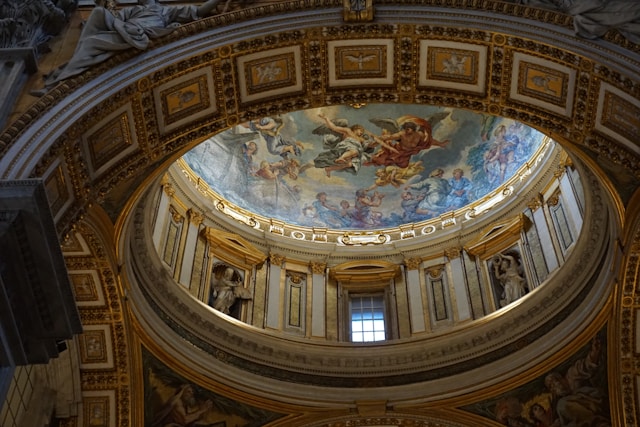Your cart is currently empty!
Explore the Historic Sanctuary: A Comprehensive Guide to the Church of the Holy Sepulchre

Introduction
Nestled in the heart of Jerusalem, the Church of the Holy Sepulchre stands as a testament to Christianity’s most sacred beliefs. For centuries, pilgrims from around the globe have journeyed to this ancient site, believed to be the site of Jesus Christ’s crucifixion and resurrection. With its impressive architectural marvels and historical significance, the Church of the Holy Sepulchre is an unmissable destination for pilgrims and history enthusiasts alike.
Historical Significance
The Crucifixion and Resurrection
According to Christian tradition, the Church of the Holy Sepulchre marks the sites of Jesus’ crucifixion at Golgotha and his entombment within a nearby cave. The Gospels of Matthew, Mark, Luke, and John describe Jesus’ final moments on Calvary, where he was crucified between two thieves and died on the cross. The Gospels also recount that his body was laid to rest in a tomb that was later discovered empty, marking his miraculous resurrection.
Early Christian History
In the 4th century, the Roman Emperor Constantine I ordered the construction of the first church on the site, known as the Basilica of the Holy Sepulchre. This magnificent structure was completed in 335 AD and became a major pilgrimage site for Christians throughout the Byzantine Empire. Over the centuries, the church was damaged and rebuilt several times, including after the Muslim conquest of Jerusalem in the 7th century.
Architectural Marvels
Rotunda and Aedicule
The centerpiece of the Church of the Holy Sepulchre is the Rotunda, a circular hall topped by a dome. At its center stands the Aedicule, a small shrine that marks the traditional site of Jesus’ tomb. The Aedicule is covered in marble and adorned with intricate carvings. Pilgrims often queue to enter the Aedicule and touch the stone slab said to have been Christ’s burial site.
Stone of Anointing
Near the entrance to the church lies the Stone of Anointing, a large marble slab where it is believed Jesus’ body was prepared for burial. Pilgrims often stop to pray and anoint themselves with oil at this sacred spot.
Calvary Chapel and Golgotha
Located on the upper level of the church, Calvary Chapel marks the traditional site of Jesus’ crucifixion. A silver-domed altar marks the spot where the cross is believed to have stood. Adjoining Calvary Chapel is the Golgotha Chapel, where the rock of Golgotha, said to be part of Jesus’ crucifixion site, is venerated.
Denominational Ownership and Shared Custody
The Church of the Holy Sepulchre is jointly administered by six Christian denominations: the Greek Orthodox, Armenian Apostolic, Roman Catholic, Syrian Orthodox, Ethiopian Orthodox, and Coptic Orthodox Churches. Each denomination has its own space within the church and conducts its own liturgies. This unique arrangement has often led to tensions and disputes among the denominations, but it has also ensured that the church has remained a center of Christian pilgrimage for centuries.
Pilgrimage and Significance
The Church of the Holy Sepulchre remains a primary destination for Christian pilgrims from around the world. Pilgrims often travel to the site to experience the sacred space where Jesus is believed to have died and risen. They pray, meditate, and walk the Via Dolorosa, the path that Jesus is said to have walked from his trial to his crucifixion.
Significance to Christians
For Christians, the Church of the Holy Sepulchre is more than just a historical site. It represents the central tenets of their faith: the suffering, death, and resurrection of Jesus Christ. The church serves as a reminder of the ultimate triumph of good over evil and the promise of eternal life for those who believe.
Practical Information
Visiting the Church
The Church of the Holy Sepulchre is open to visitors daily from sunrise to sunset. Visitors are advised to dress respectfully and be prepared for security checks. Guided tours are available for those who wish to learn more about the church’s history and significance.
Accommodation and Nearby Attractions
Jerusalem offers a wide range of accommodation options for visitors. Many hotels are located within easy walking distance of the Church of the Holy Sepulchre. The Old City of Jerusalem, where the church is situated, is also home to numerous other historical and religious sites, including the Western Wall, the Dome of the Rock, and the Al-Aqsa Mosque.
Conclusion
The Church of the Holy Sepulchre is a living testament to the historical and spiritual significance of Christianity. Its architectural marvels, historical importance, and shared custody by multiple denominations make it a unique and unforgettable destination. Whether you are a pilgrim seeking spiritual enrichment or a history enthusiast marveling at its ancient walls, the Church of the Holy Sepulchre is a place that will leave an everlasting impression.